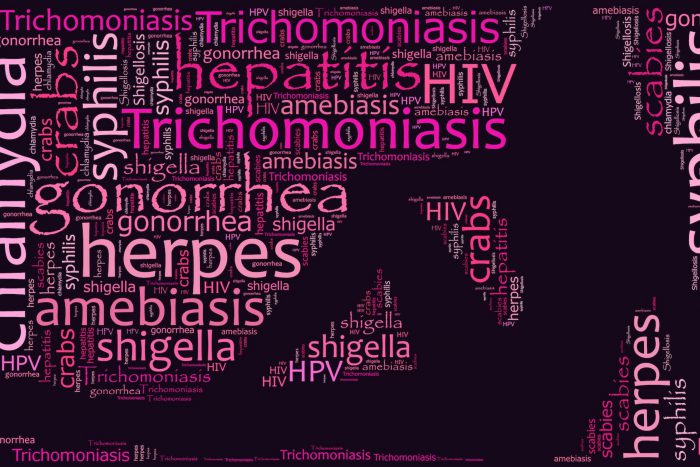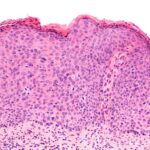
STI & STD Overview
The terms sexually transmitted infections (STIs) and sexually transmitted diseases (STDs) are often used interchangeably. However, they are two distinct concepts. STIs refer to an attack on the body by bacteria, viruses, or parasites, whereas STDs are a manifestation of an STI.
Essentially, all STDs start as STIs, but not all STIs progress to STDs. In order to understand STDs, it is important to recognize the difference between the two and learn about the various types of STDs, how can treat them, and how to prevent them.
STD Symptoms
When an STI progresses to an STD, it can present a wide range of symptoms.
Some of the most common symptoms include:
- Dyspareunia and dysuria (i.e., pain during sexual intercourse and urination)
- Sores, bumps, or rashes around or near the genital area, mouth, or anus
- Unusual discharge or bleeding from the penis or vagina
- Swollen or painful testicles
- Itching around the vagina
- Unexpected periods or bleeding after sexual activity
Keep in mind that not all STIs are symptomatic. When an STI progresses to an STD, patients could present with the symptoms listed above or completely different symptoms.
For example, some common symptoms of STDs include:
- Fever
- Recurring pain
- Fatigue
- Memory loss
- Changes to vision
- Hearing issues
- Nausea
- Weight loss
- Lumps or swellings
Underlying STD Causes
All STDs are the result of an STI. These infections spread via sexual contact, including through bodily fluids or skin-to-skin contact during vaginal, oral, or anal sex. Some STIs may not progress to STDs, especially if we treat them effectively.
In some cases, the diseases may heal spontaneously. However, if the pathogens damage cells in the body and disrupt their functions, the case will progress to STD.
Types of STDs
There are several types of STDs, including:
Pelvic Inflammatory Disease (PID)
PID is often the result of STIs caused by chlamydia, gonorrhea, and trichomoniasis. If these infections do not get treated, they may progress to PID. The latter affects approximately 2.5 million women in the United States and can precipitate infertility, as well as an increased risk of ectopic pregnancy.
The symptoms of PID may include:
- Pelvic or abdominal pain
- Pain during sex or urination
- Irregular or heavy vaginal bleeding
- Unusual discharge
- Nausea
- High temperature
If PID gets diagnosed early, we can treat it with antibiotics. Unfortunately, the scarring in the fallopian tubes cannot be reversed.
Tertiary Syphilis
We can think of the early stages of syphilis as an STI. The signs of these stages include small round sores on the genital area, anus, and mouth. Without treatment, syphilis may progress to the latent phase, which is asymptomatic. In fact, approximately 25% of cases may progress to tertiary syphilis, a process that generally occurs 10-30 years after the initial infection.
Tertiary syphilis may lead to serious consequences for various organ systems in the body, triggering vision loss, hearing loss, memory loss, mental health conditions, infections of the brain or spinal cord, and heart disease. The earlier we diagnose and treat syphilis, the less damage it will cause.
While penicillin injections are effective in the treatment of tertiary syphilis, they can’t reverse any damage that’s already occurred. Of course, if the disease causes problems in major organs (e.g., the cardiovascular system), other medications and procedures may be necessary.
Cancer
Human Papillomavirus (HPV) is an extremely prevalent sexually transmitted infection that contributes to various types of cancer. While some strains of HPV do not lead to any illnesses, others may cause abnormal cell changes, which ultimately trigger cancer.
The most common types of cancer caused by HPV include:
- Anal cancer
- Cervical cancer
- Oral cancer
- Penile cancer
- Vulvar cancer
According to the National Cancer Institute, HPV 16 and HPV 18 are responsible for the majority of HPV-related cancers in the United States. HPV causes almost all cervical cancers, over 90% of anal cancers, 75% of vaginal cancers, and over 60% of penile cancers.
Symptoms of these cancers may vary, but patients often present with pain, bleeding, and swelling. Early detection and treatment of cancer can lead to better outcomes and may involve chemotherapy, radiotherapy, and surgery. Screening tests are also available to detect pre-cancerous cell changes caused by HPV.
Genital Warts
Lower-risk strains of HPV may also cause a condition known as genital warts. These pigmented bumps appear on the genitals or anus, affecting over 350,000 people every single year. While genital warts can get treated, they are not curable since the virus that causes them may persist.
In some cases, HPV may disappear spontaneously, but genital warts can return in the future. Treatment options for genital warts include:
- Therapeutic abstinence (i.e., waiting for the warts to heal on their own)
- Freezing or burning warts
- Applying chemical creams or liquids
AIDS
HIV can weaken the immune system and increase the risk of contracting other infections and diseases, including certain cancers. Although there is no cure for AIDS, people with HIV can live long, healthy lives when following proper treatment.
If left untreated, however, HIV can lead to AIDS, causing severe infections and illnesses and reducing life expectancy to around 3 years.
Symptoms of AIDS may also lead to:
- Rapid weight loss
- Extreme fatigue
- Sores
- Infections
- Neurologic disorders
- Cancers
STDs and Pregnancy
Sexually transmitted infections (STIs) can get transmitted from a mother to her fetus or newborn during childbirth. However, not all STIs have the same risk. For instance, syphilis may get passed on to the fetus, leading to serious infections, miscarriage, and stillbirth. Genital warts can also be passed to a baby. However, the incidence of this is extremely low.
Pelvic Inflammatory Disease (PID) can impact future pregnancies and increase the risk of ectopic pregnancy and infertility in 10% of women. If you are pregnant, you should get screened for several STIs, including HIV and syphilis, to avoid health problems and ensure uncomplicated pregnancy.
Speak with a healthcare professional if you have an STD, as they may need to check the safety of medications or delay treatment as necessary. C-section delivery may be necessary if genital warts make vaginal delivery difficult.
STD Diagnosis
Diagnosing sexually transmitted diseases (STDs) can be challenging for healthcare providers. For this reason, they often opt for biological tests to identify infectious strains.
The specific test that detects STDs varies depending on your clinical presentation and medical history. Here are a few commonly ordered tests:
- Blood tests
- Keyhole surgery or a colposcopy
- Swabs extracted from bodily fluids
STD Treatment Options
The impact of STDs on the human body can vary significantly. Treatment options for STDs are also different based on your specific condition.
Some common treatments include:
- Antibiotics
- Laser therapy
- Other oral and topical medications
- Surgery
Making lifestyle modifications, such as avoiding sexual activity until the treatment is complete, is crucial to stop the transmission of the infection. Note that we cannot reverse many STDs even with treatment. Additionally, genital warts and AIDS are incurable.
Tips for Preventing STDs
The best way to avoid STDs is to prevent sexually transmitted infections (STIs). The only foolproof way to do that is to avoid sexual contact altogether. However, there are other measures to make sexual activity safer and reduce the risk of contracting an STI, including:
- Getting vaccinated for HPV and hepatitis B
- Testing yourself for various viral and bacterial strains for STIs
- Discussing your sexual history with your partner
- Using a condom properly during vaginal, anal, and oral sex
- Taking PrEP medication every day if you are at a higher risk for contracting HIV
Takeaway Message
STDs have varying effects on the body and not all of them are curable. However, many STDs are treatable with simple antibiotics and other medications. To prevent STDs, you should get screened regularly and only engage in safe sex.
If you test positive for an STI, seek treatment as soon as possible to reduce the risk of further complications.









